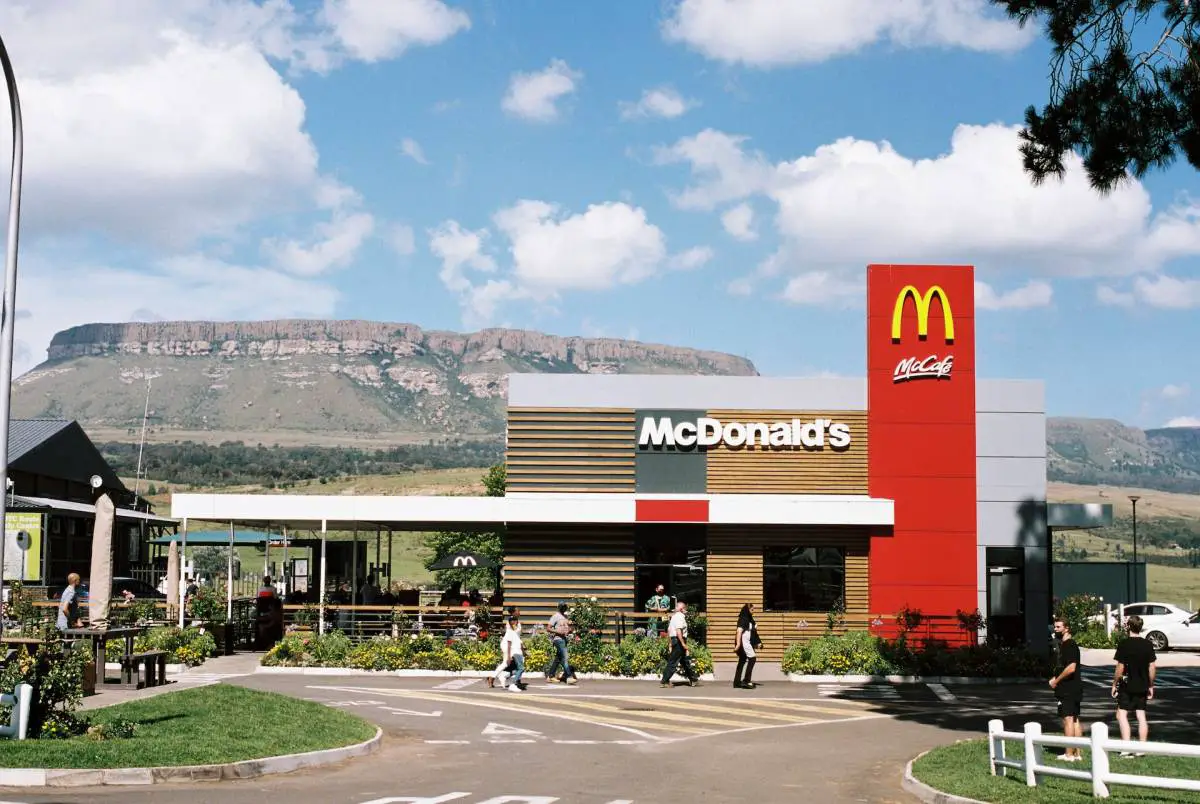AI Integration in McDonald’s Drive-Thrus
Artificial Intelligence (AI) has become an integral part of McDonald’s drive-thru operations. The fast-food giant has been leveraging AI to improve efficiency and provide a seamless customer experience. With AI, McDonald’s is able to predict customer behavior, streamline ordering processes, and improve service speed.
The Role of Machine Learning in Order Accuracy
Machine learning, a subset of AI, plays a crucial role in improving order accuracy at McDonald’s drive-thrus. By analyzing past orders and customer behavior, machine learning algorithms can predict what a customer is likely to order, even before they reach the ordering point. This not only speeds up the ordering process but also reduces the chances of errors.
Enhancing Customer Interactions through AI-Powered Systems
McDonald’s AI-powered systems are designed to enhance customer interactions. These systems can recognize regular customers, remember their usual orders, and even suggest personalized recommendations. This level of personalization adds a unique touch to the drive-thru experience, making customers feel valued and understood.

Smart Menus and Personalized Recommendations
McDonald’s has introduced smart menus in its drive-thrus, which use AI to offer personalized recommendations to customers. These smart menus can adapt to various factors, such as time of day, weather, and trending items, to suggest relevant options to customers.
How AI Analyzes Customer Preferences
AI analyzes customer preferences by studying their past orders and behavior. It takes into account factors like what items a customer frequently orders, what combinations they prefer, and at what times they usually visit. Using this data, AI can predict what a customer might want to order, even before they say anything.
The Impact of Personalized Menus on Drive-Thru Sales
Personalized menus have a positive impact on drive-thru sales. When customers see recommendations tailored to their preferences, they are more likely to make additional purchases. Moreover, personalized menus can speed up the ordering process, allowing McDonald’s to serve more customers in less time.
The Rise of Mobile Ordering
Mobile ordering has revolutionized the way customers interact with fast-food restaurants. With the McDonald’s mobile app, customers can place their orders in advance, customize their meals, and even pay directly from their phones. This not only saves time at the drive-thru but also gives customers more control over their orders.
McDonald’s Mobile App Features and Capabilities
The McDonald’s mobile app offers a range of features that enhance the drive-thru experience. Customers can browse the full menu, customize their orders, save their favorite items, and even track their order in real-time. The app also offers exclusive deals and rewards, further incentivizing customers to use it.
Benefits of Pre-Ordering via Mobile Apps
Pre-ordering via mobile apps has several benefits. For customers, it means less time spent waiting at the drive-thru. They can place their order at their own pace, without feeling rushed. For McDonald’s, pre-ordering allows for better order management and reduces pressure on staff during peak hours.
Integration with Drive-Thru Operations
The McDonald’s mobile app is fully integrated with its drive-thru operations. When a customer places an order through the app, it is sent directly to the restaurant they have selected. The staff then prepares the order so that it’s ready when the customer arrives, ensuring a smooth handover at the drive-thru window.
Seamless Handover from App to Drive-Thru Window
When a customer arrives at the drive-thru, the staff already has their order details, thanks to the app. This seamless handover from app to drive-thru window means that the customer doesn’t have to repeat their order, reducing the chances of miscommunication or errors.
Real-Time Order Updates and Customization Options
The McDonald’s mobile app provides real-time updates on the status of an order. Customers can see when their order is being prepared and when it’s ready for pickup. They also have the option to customize their order right up until it starts being prepared, giving them more flexibility and control.
Evolution of Payment Methods at McDonald’s Drive-Thrus
Over the years, McDonald’s has introduced various payment methods in its drive-thrus to enhance customer convenience. From cash and card payments to mobile wallets and contactless card payments, McDonald’s has always been at the forefront of adopting new payment technologies.
Mobile Wallets and Contactless Card Payments
With the rise of digital wallets like Apple Pay and Google Pay, McDonald’s has enabled contactless payments at its drive-thrus. Customers simply need to hold their phone or contactless card near the payment terminal to make a payment. This not only speeds up the payment process but also reduces physical contact, which is particularly important in the post-COVID era.
Enhancing Speed and Convenience for Customers
Contactless payments significantly enhance speed and convenience for customers. They no longer need to fumble with cash or cards – a quick tap is all it takes to make a payment. This means less time spent at the payment window, resulting in a faster drive-thru experience.
Security Measures and User Privacy
As with any digital transaction, security is a key concern with contactless payments. McDonald’s has implemented several measures to ensure secure transactions and protect user privacy.
McDonald’s Approach to Secure Contactless Transactions
McDonald’s uses encryption technology to secure contactless transactions. When a customer makes a payment, their card information is encrypted and sent to the bank for verification. This means that even if a hacker intercepts the transaction, they won’t be able to decipher the card information.
Balancing Convenience with Data Protection
While contactless payments offer convenience, they also raise concerns about data protection. McDonald’s has stringent privacy policies in place to protect customer data. It does not store card details on its servers, and all personal data is handled in accordance with local and international privacy laws.
Implementation of Voice Recognition in Drive-Thrus
Voice recognition technology is another innovation that McDonald’s is exploring for its drive-thrus. By converting spoken words into text, voice recognition systems can take orders accurately and efficiently, reducing reliance on human staff.
Improving Order Accuracy and Speed
Voice recognition technology can significantly improve order accuracy at drive-thrus. Unlike humans, these systems don’t get tired or distracted, so they are less likely to make mistakes. They can also process orders faster, reducing wait times for customers.
Challenges and Innovations in Voice-Activated Systems
Despite its potential, voice recognition technology also poses challenges. Accents, background noise, and unclear speech can hinder its performance. However, advances in AI and machine learning are helping overcome these challenges, making voice-activated systems more reliable and accurate.

Multilingual Support and Accessibility
As a global brand, McDonald’s serves customers who speak a wide range of languages. To cater to this diverse customer base, it is important for its voice recognition systems to support multiple languages and dialects.
How McDonald’s Adapts Voice Technology for Diverse Customer Bases
McDonald’s is working on adapting its voice recognition technology to support various languages and accents. This will ensure that all customers, regardless of their language or accent, can have a seamless ordering experience at its drive-thrus.
Enhancing the Drive-Thru Experience for Non-English Speakers
By supporting multiple languages, McDonald’s can enhance the drive-thru experience for non-English speakers. They can place their orders in their preferred language, making the process more comfortable and efficient for them.
Dynamic Menu Displays in McDonald’s Drive-Thrus
Digital menu boards are becoming increasingly common in McDonald’s drive-thrus. These dynamic displays show the menu, promotional offers, and other relevant information in a visually engaging manner. They can be updated in real-time, allowing McDonald’s to adapt its offerings based on various factors.
Benefits of Digital Menu Boards for Customer Engagement
Digital menu boards can significantly enhance customer engagement. Their vibrant displays catch the eye, drawing customers’ attention to featured items and promotions. They also provide a platform for McDonald’s to communicate with its customers, whether it’s showcasing new items or sharing nutritional information.
Real-Time Updates and Promotional Features
One of the key advantages of digital menu boards is their ability to provide real-time updates. McDonald’s can instantly update the menu to reflect changes in availability, promote limited-time offers, or highlight popular items. This flexibility allows McDonald’s to respond quickly to changing customer demands or market trends.
Tailoring Menus to Local Preferences
McDonald’s is known for adapting its menu to local tastes. With digital menu boards, it can take this localization a step further. By analyzing sales data and customer behavior, McDonald’s can tailor its menu display to reflect local preferences.
How Digital Displays Adapt to Regional Tastes
Digital displays can be programmed to show different items based on the location of the drive-thru. For instance, if a particular item is more popular in one region, it can be highlighted on the menu board in that region. This level of customization ensures that the menu is always relevant and appealing to the local customer base.
McDonald’s Strategies for Localized Digital Content
McDonald’s uses a combination of sales data, customer feedback, and market research to determine what items to feature on its digital menu boards. This data-driven approach allows it to create localized digital content that resonates with customers in different regions.
IoT Devices Optimizing Drive-Thru Efficiency
The Internet of Things (IoT) refers to the network of physical devices connected to the internet, collecting and sharing data to optimize operations. In the context of McDonald’s drive-thrus, IoT devices such as sensors and connected kitchen appliances can help improve efficiency and speed of service.
Sensors and Connected Devices in Drive-Thrus
Sensors in the drive-thru lane can detect when a car pulls up, triggering the ordering process. In the kitchen, connected devices like fryers and grills can automatically adjust their settings based on the incoming orders, optimizing cooking times and reducing waste.
Data Analytics for Enhanced Efficiency
The data collected by these IoT devices can provide valuable insights into drive-thru operations. By analyzing this data, McDonald’s can identify bottlenecks, predict peak times, and make informed decisions to enhance efficiency.
Augmented Reality: The Future of Drive-Thru
Augmented reality (AR) is another technology that McDonald’s is exploring for its drive-thrus. AR overlays digital information onto the real world, providing an immersive and interactive experience.
Gamification and Entertainment in the Drive-Thru Lane
With AR, McDonald’s could turn the wait time in the drive-thru lane into a fun and engaging experience. Customers could play games, explore virtual menus, or even customize their order in a 3D format, all from the comfort of their car.
Customizing Orders with AR Technology
AR could also revolutionize the way customers customize their orders. They could see a virtual representation of their meal and make changes in real-time, ensuring they get exactly what they want.
As part of its commitment to sustainability, McDonald’s is constantly looking for ways to make its drive-thrus more environmentally friendly. This includes implementing energy-efficient technologies, reducing waste, and promoting sustainable practices.
Energy-Efficient Technologies in Drive-Thrus
Energy-efficient technologies like LED lights and smart thermostats can significantly reduce the energy consumption of drive-thrus. McDonald’s is also exploring the use of renewable energy sources, such as solar panels, to power its drive-thru operations.

Reducing Waste in Drive-Thru Operations
McDonald’s is working on several initiatives to reduce waste in its drive-thrus. This includes minimizing packaging, promoting recycling, and optimizing food preparation processes to reduce food waste.
Ensuring Inclusivity in Drive-Thru Technology
Inclusivity is a key consideration in McDonald’s drive-thru technology. The company is committed to ensuring that all customers, regardless of their abilities or technological savvy, can enjoy a seamless and enjoyable drive-thru experience.
Addressing Technological Barriers for All Customers
McDonald’s understands that not all customers are comfortable with using digital technologies. To address this, it provides clear instructions and support for using its mobile app and other digital services. It also ensures that its drive-thrus are staffed with friendly and helpful employees who can assist customers with their orders.
In conclusion, McDonald’s is continually innovating its drive-thru operations to enhance the customer experience. From AI and voice recognition to digital menus and AR, it is leveraging the latest technologies to streamline processes, personalize service, and engage customers in new and exciting ways. Despite the challenges and complexities of the technological frontier, McDonald’s remains committed to delivering a fast, convenient, and enjoyable drive-thru experience for all customers.





